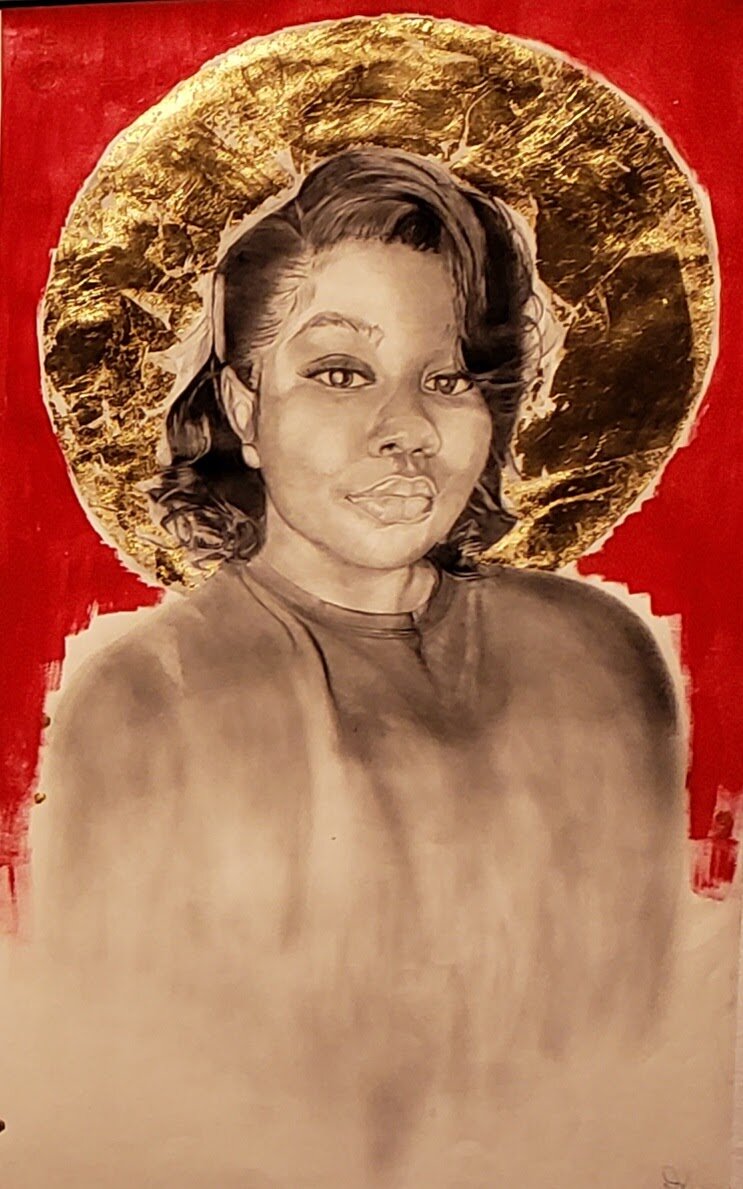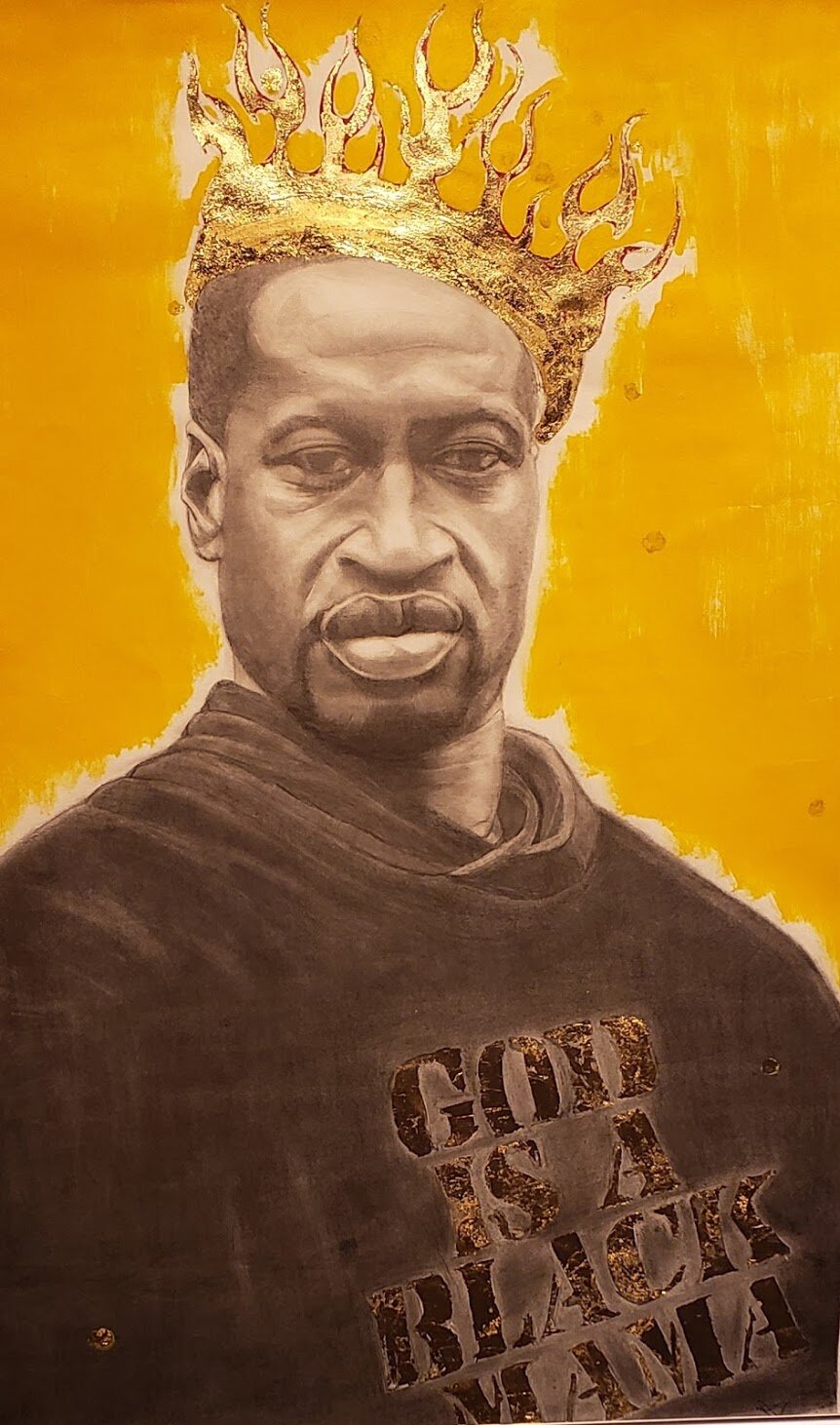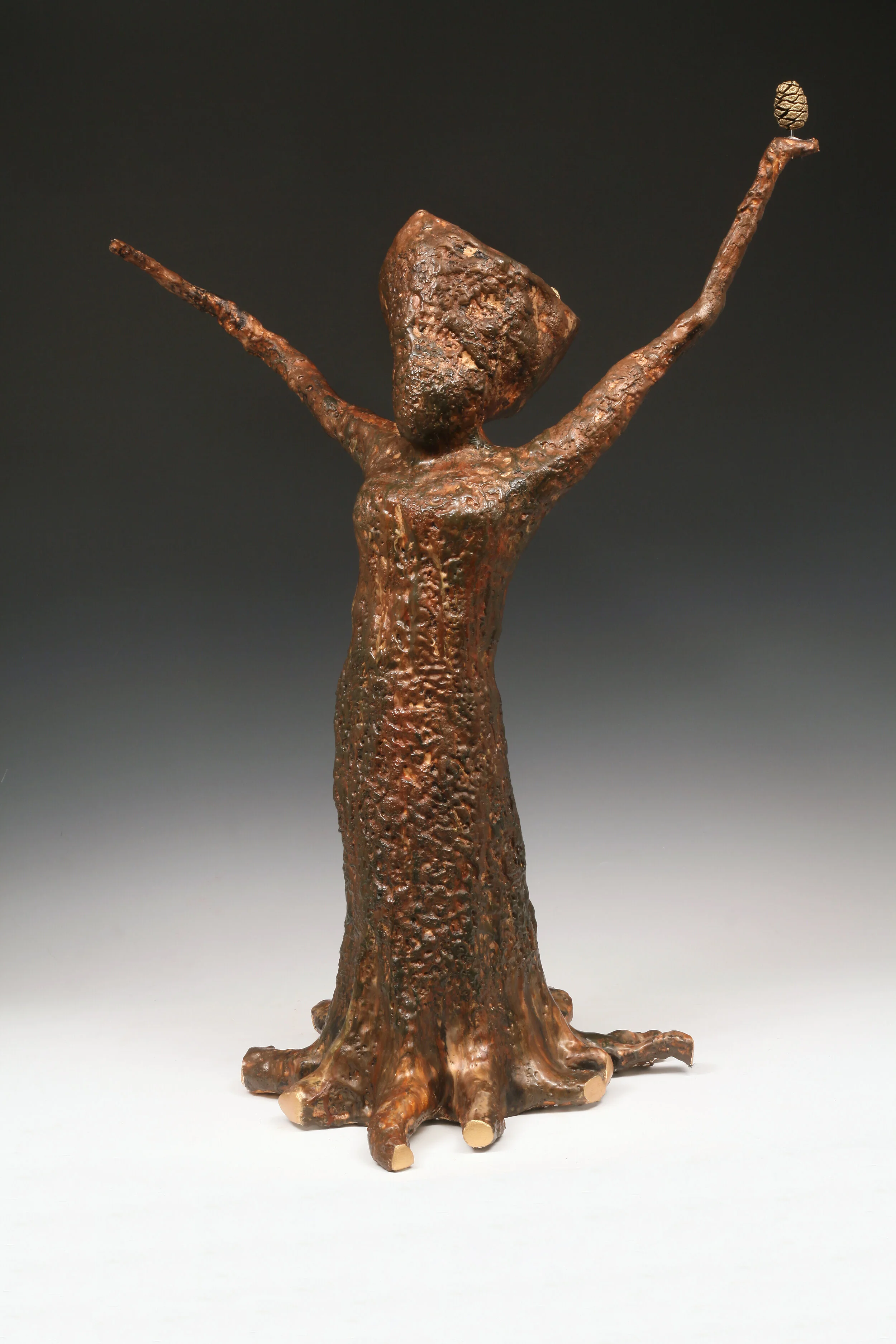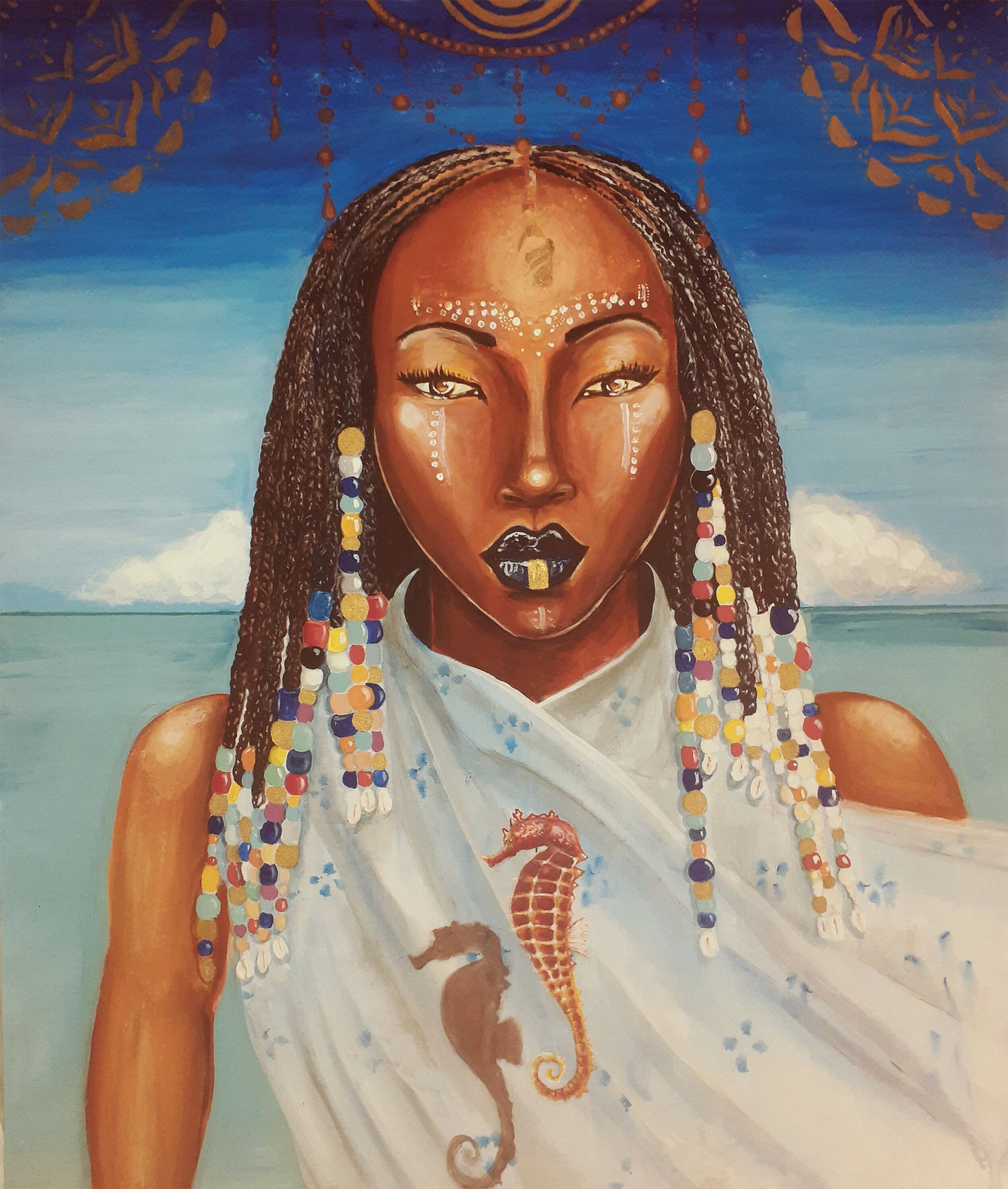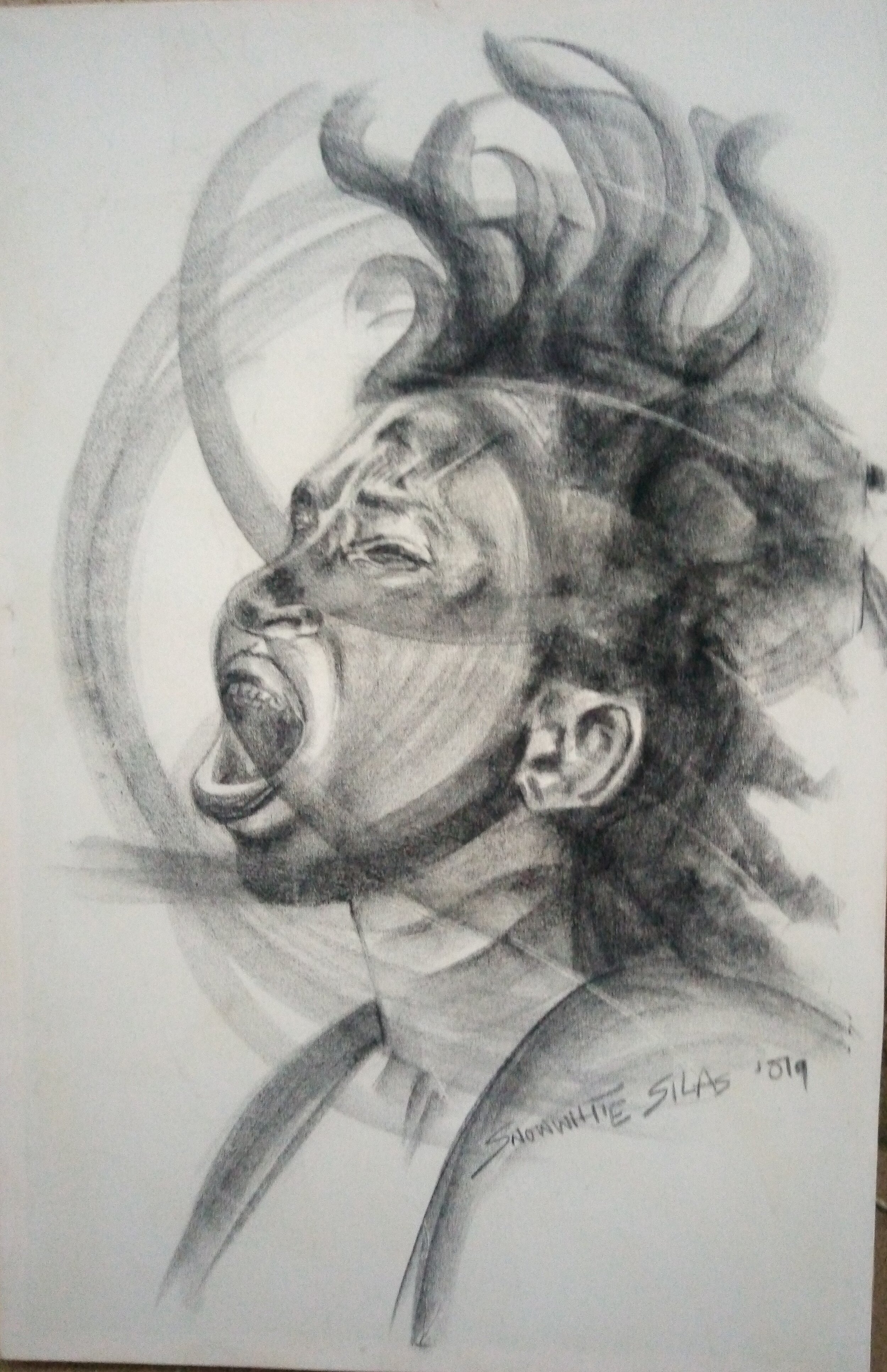ARTIST, Co-Curator and Founder of The Black Woman is God
Karen Seneferu is one of the most thought provoking visual artists of our time. Born and raised in Oakland California, her childhood was fed by revolutionary politics and the Black Panther Party’s free breakfast program. She earned a B.A. in English from the University of California at Berkeley and has dedicated her life to working as an educator and artivist. Self taught in her artistic craft, Senefuru is obsessed with gathering information, imagery and ideas. As a result, her work contains a completeness that belies her brief tenure as a multimedia artist. Using natural and manufactured materials she boldly examines the ancient and contemporary, turning modern objects into artifacts. This Afrofuturistic aesthetic provides a curative intersection between technological and the spiritual. Senefuru’s is grounded in the philosophy that space has hidden meaning. Therefore, her work seeks to enter into and transform the meaning of space.
At the center of my work is beauty. Despite what I create I want beauty to be resistance to annihilation. Often times public and private domains are structures of trauma for the Black body that distort how the individual views the self. I want to challenge the dehumanizing depictions by rooting beauty in the African esthetics. I use iconic patterns, forms and colors associated to the cultural value of Africa form and in some cases, integrate those components with technology to speak to the contemporary concerns. This allows for me to dialogue with traditional African art while attempting to advance the medium of the work.
Reoccurring patterns and shapes emerge in my forms. One is the cross, that for me symbolizes peace. The shape represents the crossroad figure who becomes the place of struggles for Africans in American because the binary construct demands one give up one’s cultural identity for the possibility of belong. However, within Yourba spiritual practice, the cross is God. The Kalunga, line establishes a threshold or boundary between the world of the living and the dead associated through bodies of water, like the Atlantic Ocean. I try to gather parts of myself, my family my community into the work to not only celebrate the beauty I produced but how that production could not have existed without them. The implementation emerges as various assemblage pieces that show the constant battle of claiming the self. However, it doesn’t always turn into but can sometimes become a beautiful struggle.



